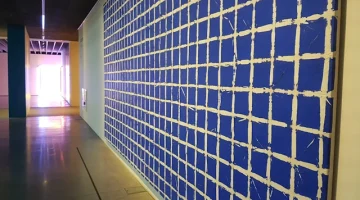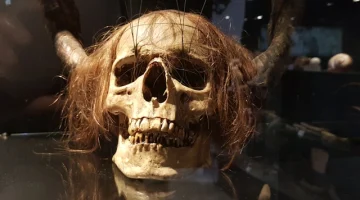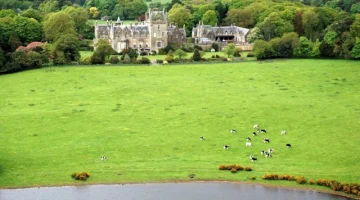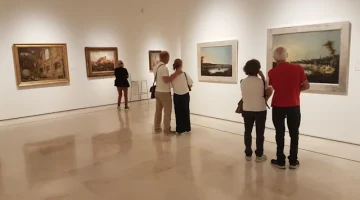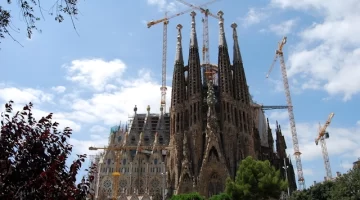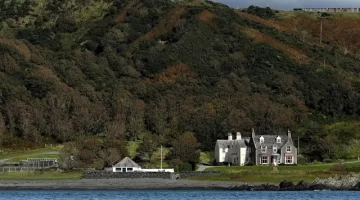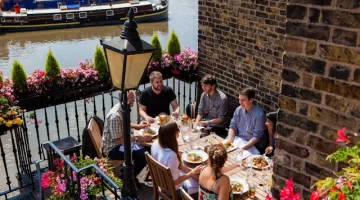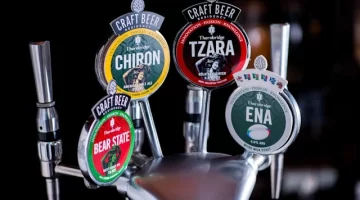Aix-en-Provence
The Travel Pages visits Aix-en-Provence and gives a potted travel guide to the city north of Marseille, with its museums, markets, fountains, and cathedral.

It’s only about 30 kms (19 miles) north of Marseille, but Aix-en-Provence seems a world away from the earthy port city. Here the atmosphere is one of genteel prosperity, with handsome mansions, leafy squares and around 40 public fountains which are a much-loved feature of Aix.

Aix-en-Provence History
Aix was founded by the Romans who were attracted by its hot springs. Les Thermes Sextius, a thermal spa complex, stands on the site of the old Roman baths in the Old Town. Aix was the capital of Provence from the late 12th century until the French Revolution.
Long-known as a centre of art and learning, its well-heeled residents are joined by thousands of students who come to study arts and humanities at its prestigious university. The writer Emile Zola and the painter Paul Cézanne both came from Aix and lived here in the 19th century.

Aix-en-Provence Fountains
The most beautiful street in this beautiful city is its central boulevard, Cours Mirabeau, which is lined on both sides with towering plane trees. It begins at the Rotunda with its monumental fountain representing Justice, Agriculture, and Fine Arts, the town’s main activities.
Three smaller fountains stand along the centre. The oldest, the Nine Canons Fountain, dates from 1691. The middle Hot Water Fountain, known as the ‘mossy fountain’, is fed by the hot spring. King Rene’s Fountain, at the eastern end by place Forbin, has a statue of the king holding a bunch of grapes, symbolising the Muscat vines he brought to Provence.
The boulevard is further graced by elegant 17th- and 18th-century mansions with wrought-iron balconies, and pleasant cafes where you can survey the passing scene.

Aix-en-Provence Markets
The best time to visit Aix is on a Tuesday, Thursday, or Saturday morning. Then, a big clothes market runs the length of the boulevard. This is not your run-of-the-mill bargain goods market. You’ll find quality dresses, trendy sportswear, Provençal fabrics, lingerie, smart handbags, and leather goods.

The market continues into the streets of the Old Town, to the north of cours Mirabeau. There is an antiques and flea market beside the Palais de Justice in place de Verdun, a huge food market centred around place des Prêcheurs, and a colourful flower market in front of the town hall in place de l’Hôtel de Ville. Get there early. By 1pm it’s all wrapped up and street cleaners are sweeping the streets back to their usual pristine state.

Cathédrale Saint-Sauveur
You’ll find many upmarket shops along the narrow, semi-pedestrian streets of the Old Town. Forum des Cardeurs, centre of the medieval Jewish quarter, is now filled with bright cafes and restaurants.

A major landmark is the Cathédrale Saint-Sauveur, displaying a mix of styles from the 5th to the 17th centuries. Noteworthy features include the carved walnut doors at the west entrance, Romanesque cloisters, and the lovely octagonal baptistery to the right of the entrance, which dates from the 4th-5th centuries and incorporates columns from an earlier Roman temple on this site.

Tapestry Museum
Next door to the cathedral, in the place des Martyrs de la Résistance, is the former Archbishop’s Palace. On the first floor, the ornate state apartments are now home to the Musée des Tapisseries, the Tapestry Museum. Among the splendid works, woven in the 17th and 18th centuries, are nine huge panels illustrating the life of Don Quixote. There is also a display of costumes from the annual music festival held here in July.

Musée Granet
To the south of cours Mirabeau is the Mazarin quarter, once the home of the aristocracy. At its heart is the place des Quatre Dauphins, with its lovely dolphin fountain.
Nearby is Musée Granet, Aix’s main art and archaeology museum, housed in the former priory of the Knights of Malta. Cézanne studied here when the building was used as an art school. It displays eight of his works, along with French paintings from the 16th to the 20th centuries, works from the Dutch, Flemish, and Italian schools, sculpture, graphic arts, and archaeology exhibits from a nearby 2nd-century BC Celto-Ligurian settlement. Modern works by Picasso, Mondrian, and Paul Klee are also on show.
Adjoining the museum is the church of Saint Jean of Malta, a fortified Gothic church built in the late 12th century which served as the chapel for the priory.
Paul Cézanne

The Impressionist painter Paul Cézanne was born in Aix on 19 January 1839. At school he became friends with the writer Emile Zola, who encouraged him to pursue his dream of becoming an artist. Cézanne enrolled in law school to please his father, but studied painting at the same time.
After failing the exam to enter the Ecole des Beaux Arts in Paris, he returned to Aix in 1861 to work in his father’s bank. Eventually his father gave him a small allowance to support his painting career, and he returned to Paris where he met Monet, Renoir, and Pissaro, as well as his future wife, Hortense Fiquet.
Cézanne displayed his works in several Impressionist exhibitions during the 1870s, but increasingly spent more and more time in Aix. He returned to Provence permanently in 1886, where he often painted the Montagne Sainte-Victoire and surrounding landscape.
In 1899 he rented a flat in Aix in rue Boulegon. Two years later he built his studio at Chemin des Lauves, north of the Old Town, where he painted some of his most famous works. In 1906 he caught pneumonia while out painting in a rainstorm, and died in Aix on 23 October.
The Atelier Paul Cézanne at 9 avenue Paul Cézanne, his studio, has been left as it was at the time of the artist’s death and is open to visitors. It’s a 10-minute walk or short bus ride from the Old Town. The tourist office has information on tours and other Cézanne sights that can be visited from Aix.
Where to Eat in Aix-en-Provence
Les Deux Garçons
53 cours Mirabeau
Founded in 1792, this is the oldest and most famous cafe on the cours Mirabeau. It’s probably the most popular with visitors, too, given that it was a favourite haunt of Cézanne and Zola. From the outdoor tables you can watch the passers-by on the boulevard and place Forbin. Inside there is faded belle époque decor. The cafe serves good brasserie-style fare, though not surprisingly, it’s on the pricier side.
Getting to Aix-en-Provence
The train station at Aix is 8 kms (5 miles) outside of town. There is a minibus service from there to the bus station in the town centre every half hour. If you’re coming from Marseille, you’re better off taking the bus, which leaves every 5-10 minutes and takes around 30 minutes, depending on traffic. Buses arrive and leave from Avenue de l’Europe, which is about a 5-minute walk from Cours Mirabeau. Tickets are only a few euros and you can buy them on the bus.


